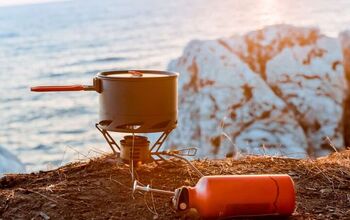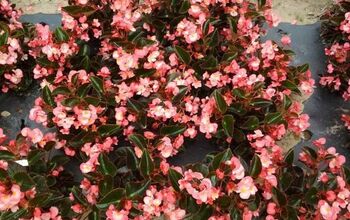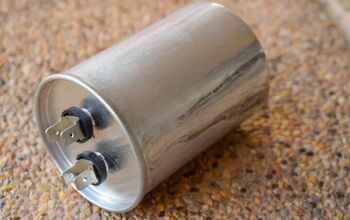Mapp Gas Vs. Propane: What Are The Major Differences?

Both propane and Mapp gas are familiar forms of fuel to many builder-owners and professionals. Propane is perhaps more widely known as it is a part of everyday life, especially for rural homeowners. Mapp gas, however, is a name that many builder-owners may be unfamiliar with, so when considering Mapp gas vs. propane, what’s the difference?
Mapp gas provides a flame that is 3,730 degrees Fahrenheit, compared to propane’s 3,600 degrees. The brand-specific Mapp gas was discontinued in 2008, but today there is a similar product called MAP-pro. Propane is cheaper and easier to handle than MAP-pro, and it’s ideal for generators, grills, space heaters, and home appliances. MAP-pro is better for cutting metal and soldering and is a better choice for professionals.
Mapp gas may no longer be available, but MAP-pro is extremely similar. Both are great products. Let’s explore the differences between Mapp gas and propane and see which is better for what use.
Do You Need to Hire a Professional Welder?
Get free, zero-commitment quotes from pro contractors near you.

What Is Mapp Gas?
Mapp, or MAPP gas, is an acronym for methyl-acetylene propadiene propane, and it’s highly effective. Butane is another element of Mapp gas, and that contributes to the high-quality flames it’s known for. While Mapp gas was highly effective and widely used for years, it was discontinued in 2008.
Mapp gas was notable for being entirely colorless, and it boasted a distinct fish-like smell. Certain dangers, such as inhalation, were present with Mapp gas and it had to be handled with caution. Mapp gas was widely appreciated for being a great alternative to acetylene and was considered mostly safe.
The brand itself never replaced MAPP gas, but alternatives such as MAP-pro are widely used. You can find products that use “Mapp” in the title, but they are unrelated to the original product. Since 2008, there has been no official replacement for Mapp gas.
Mapp gas was used by everyone from plumbers to cooks, and it was quite diverse. Because Mapp gas burns hotter than propane at 3,730 degrees Fahrenheit, it had a wide range of applications. Let’s take a look at some of the main uses for Mapp gas.
1. Cooking
One of the best applications of Mapp gas is for cooking, particularly when using a torch. The high temperature that Mapp gas burns at makes it ideal for searing food with a torch. It may sound backward, but searing food at high temperatures can help mitigate the chance of a burnt taste.
In fact, until its discontinuation, Mapp gas was recommended to use in place of butane torches. Ultimately, it’s a matter of preference, but Mapp gas leaves less of a taste on the food than butane does. You may not be able to torch a crème Brulee with Mapp gas anymore, but there was a time when that was the best option.
2. Soldering
Mapp gas was even used for soldering due to its extreme temperatures and combustion. In 10 seconds or less, you can solder through up to ¾” of a copper pipe using Mapp gas. Because of that, Mapp gas was the choice of many plumbers for years.
Similarly, Mapp gas was also used to cut through metal underwater until exothermic methods were invented. Mapp gas could withstand high pressure which made cutting underwater less of a threat than acetylene.
Do They Still Make Mapp Gas?
They haven’t made the original Mapp gas since 2008, but they still make products. There was a high concentration of oxygen in Mapp gas, and it turns out that it can be dangerous for welding and soldering. The best modern alternative to Mapp gas is known as MAP-pro, which solely features propane and propylene.
Many plumbers, welders, and builder-owners find that MAP-pro is a great alternative to propane on its own. Similarly, MAP-pro is widely regarded as a great replacement for Mapp gas itself. They may not make Mapp gas anymore, but the wide availability of MAP-pro means that you aren’t out of luck.
Mapp Gas vs Propane
Here’s a quick breakdown of some of the main factors to consider when comparing Mapp gas vs. propane.
Mapp Gas vs Propane: Flavor in Food
Propane can potentially leave an odor behind in some foods when you cook with it. Conversely, Mapp gas doesn’t appear to impact food’s flavor. This is because it burns so much hotter which does not leave behind gas odors.
Mapp Gas vs Propane: Temperature
Mapp gas burns higher at 3,730 degrees Fahrenheit compared to propane which burns at 3,600 degrees Fahrenheit. If using Mapp gas for cooking, you can get things done more quickly than with propane.
Mapp Gas vs Propane: Cost And Convenience
Propane is less expensive than Mapp gas. Plus, since Mapp gas is discontinued, it is extremely hard to find, meaning prices will be even higher. This quality also makes propane much more convenient than Mapp gas.
Mapp Gas vs Propane: Safety
Propane burns at a lower temperature than Mapp gas making it safer when doing things like cooking. But that doesn’t mean you shouldn’t exercise care when using it. Anytime you’re using any type of gas, it’s essential to be careful.
What Is Propane?
Propane is a fuel and petroleum-based gas that is widely available and highly effective. After petroleum and natural gas are refined, you get the final product of propane. In many ways, propane is the ultimate fossil fuel as it can be found naturally amongst petroleum deposits.
Brands such as Bernzomatic, Coleman, AmeriGas, Worthington, and Manchester produce propane. You can generally get a 4-pack of 16-ounce propane tanks for between $13 and $17. If you need bulk, however, you can find 20-pound tanks for $30 or more, depending on the brand.
Propane has more practical everyday uses than Mapp gas does, and that’s why it’s so common. Whether it be your generator or your fireplace, propane can provide power for hours with consistency. Follow along as we explore some of the most common and practical uses for propane.
1. Grilling
Propane has been an alternative to grilling with charcoal for years now, and with good reason. If you were to slow cook ribs on a grill, propane may be your best bet because of the temperature consistency. With charcoal, for example, you can get an uneven burn at times, and it can take a long time for the grill to get hot.
That’s not a problem with propane, as a propane grill heats up quite fast. In many cases, you can be ready to throw food on the grill in 15 minutes or less with propane. It doesn’t hurt that propane adds no negative taste to whatever you decide to cook, and it leaves no mess.
2. Generators
Propane generators have helped out countless families and builder-owners during power outages. Many homeowners find that propane generators are superior to gas alternatives. That is mostly due to the quiet operation associated with propane generators when compared to gas.
With that said, propane generators are slightly less energy efficient than gas generators. It’s a worthy tradeoff, however, when you consider how well propane generators run in cold weather conditions. The clean burn and smooth operation of a propane generator are well worth it, and it can save the day.
3. Heaters
You can enjoy time outside when it’s chilly with the use of a propane heater. They vary in cost between $30 and $180 or more, but propane heaters make all the difference. Indoor propane heaters also exist and are a great way to save money on energy bills.
As long as you don’t place anything on top of a propane heater, you won’t be at risk for fire. You should also try not to obstruct or move the propane heater while it’s running. Whether you want to be warm while outside in the cold or you want your house to feel cozy, propane heaters are an excellent convenience.
4. Appliances
Perhaps the most practical use of propane is for running appliances, which it’s ideal for. Sometimes, an electronic ignition water heater won’t heat, but that’s not a problem with propane. Whether it be a hot tub, heated pool, water heater, or fireplace, propane can be used to great effect.
Gas fireplaces often use propane due to its consistency and temperature. Propane is also quite stable which makes its use in appliances a safe prospect. You can get so many practical uses out of propane, and its presence in home appliances is the most useful.
Propane vs MAP-Pro
MAP-pro contains propane, and it’s a common alternative to propane itself. Generally speaking, propane is best used for grilling, powering appliances, generators, and space heaters. MAP-pro, on the other hand, is ideal for soldering.
Because of that, propane is best used by consumers, and MAP-pro is ideal for professionals. Plumbers can get more out of MAP-pro than a general consumer, but general consumers have little use for it. Propane burns at 130 degrees lower than MAP-pro, which makes it somewhat safer as well.
If you need to cut through metal, then MAP-pro is your best bet. However, if you simply need to grill or power a generator, then propane is more than enough for you. Be careful when using MAP-pro, as exposure to excess oxygen can soar the temperatures to 5,200 degrees Fahrenheit.
Related Questions
Is propane a natural gas?
Propane occurs naturally and comes as the result of natural gas and petroleum refinement. Natural gas is different than propane in that it quickly evaporates into the environment. Because of that, natural gas is slightly safer than propane, although propane is considered to be safe.
How long does a MAPP gas cylinder last?
A MAPP ga cylinder typically lasts for about three to four hours.
Do You Need to Hire a Professional Welder?
Get free, zero-commitment quotes from pro contractors near you.

Mapp Gas vs Propane: Summing It Up
Both Mapp gas and propane are effective forms of fuel that have many practical uses. Between the two, propane is much more practical in its wide range of uses, such as powering appliances. Since 2008, Mapp gas has been discontinued, but products such as MAP-pro are still going strong.
Propane is more convenient than Mapp gas as it can be used casually by homeowners. Mapp gas, however, was best used in its prime by welders and plumbers. Propane grills are widely used due to their convenience, lack of a mess, and quick heat time.
If you need something stronger than propane, you could give MAP-pro a try. However, unless you are soldering and welding, propane is generally more than enough. Whether you use MAP-pro or propane, be sure to exercise caution and mitigate the danger.

Nick Durante is a professional writer with a primary focus on home improvement. When he is not writing about home improvement or taking on projects around the house, he likes to read and create art. He is always looking towards the newest trends in home improvement.
More by Nick Durante



























